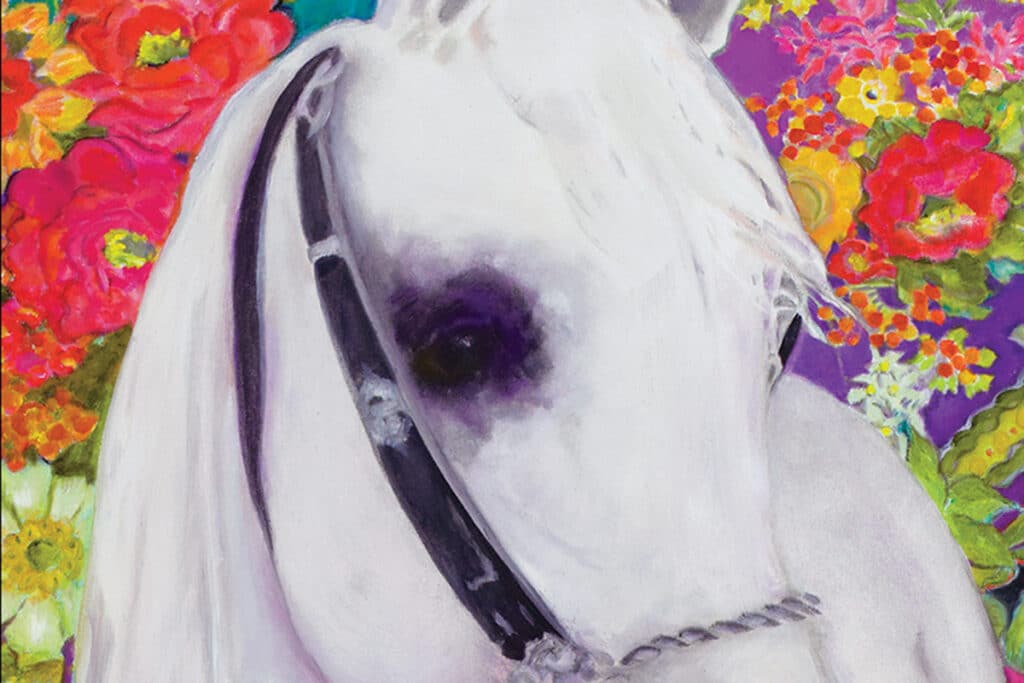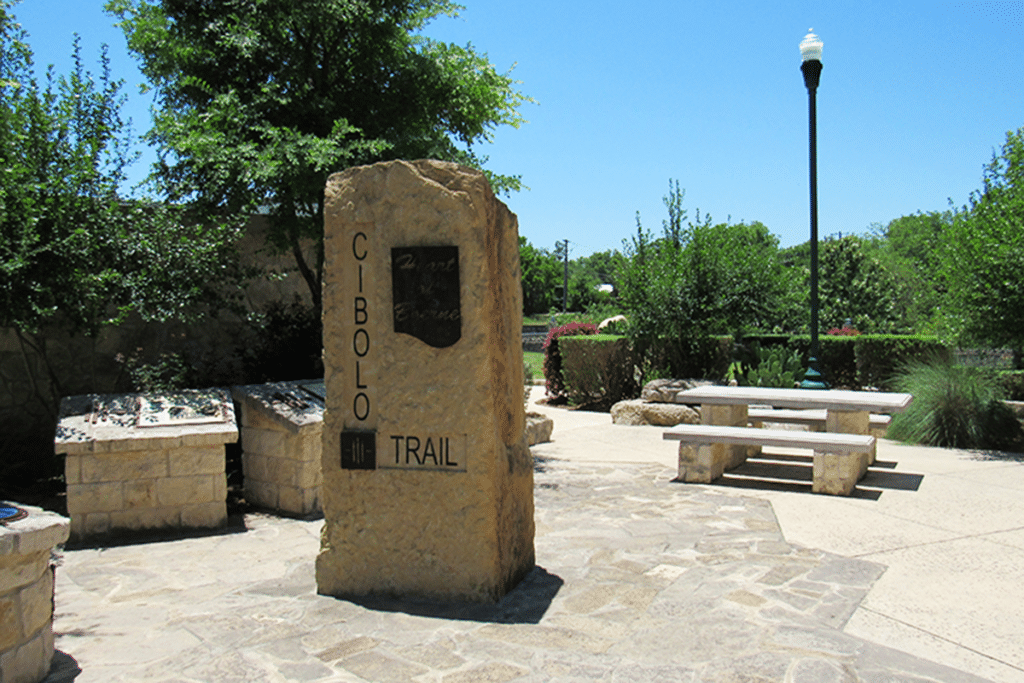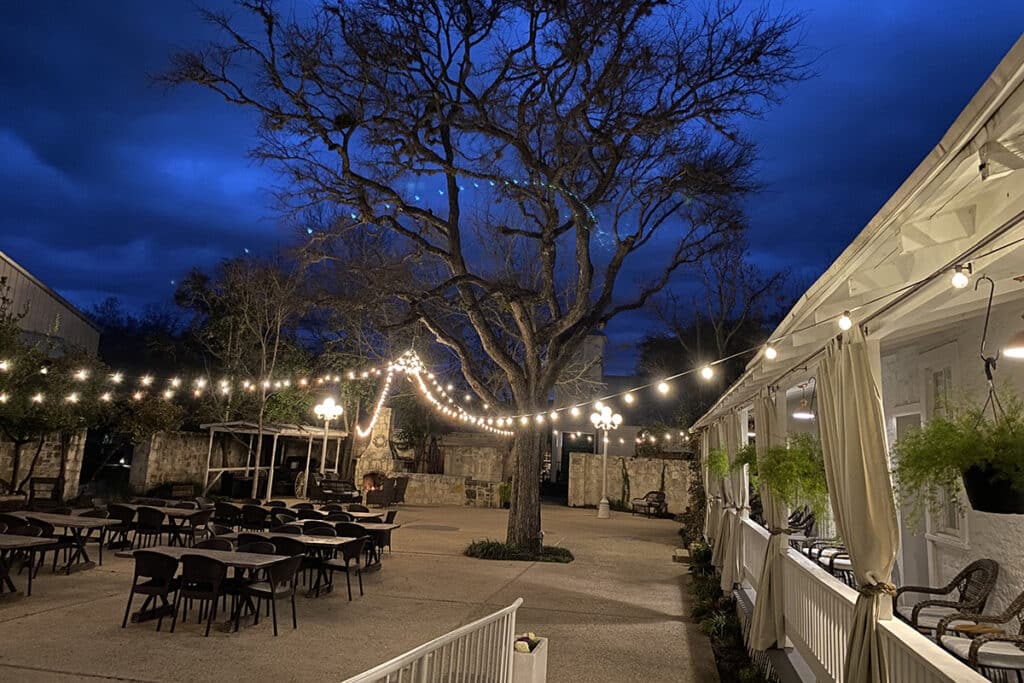Saint Mark the Evangelist Catholic Church on Thousand Oaks Drive is one of those contemporary temples designed to appeal to a minimalist’s taste in décor and atmosphere. There are no paintings or statues in nooks and crannies along the walls, no fancy columns to pull your eye heavenward — it’s a simple, open space.
But behind the altar rises a huge figure of Christ, seemingly emerging from the brick wall itself, his arms outstretched, his gaze focused on the world beyond the sanctuary’s walls. The effect is one of a silently commanding presence.
The larger-than-life, high-relief sculpture is the work of Donna Dobberfuhl, a San Antonio-based artist who loves the warmth and beauty of architectural brick.
“I discovered brick in 1978 or “79 at the Anatole Hotel in Dallas,” recalls the artist, who moved to the Alamo City in 1980.”I saw these two outdoor panels and went berserk. “How is this done?’ I had to know. So I did further research on brick relief as part of the architecture of a place. I wanted to work on a large scale. At the time I was doing life-size bronzes, but I wanted to go bigger.”
Though she already had a fine arts degree and additional training in sculpture, Dobberfuhl applied herself to the study of this new medium that enchanted her. She talked to masons and architects to master the lingo of the trade and took lots of brick home with her to practice. It helped that she had already had some experience with pottery engraving.
Her first brick project was a panel with carved figures of athletes for a new athletic center at the University of Connecticut. But she has since spread her wings throughout the United States. Her work is incorporated in the Cancer Survivors Plaza in Cleveland, Ohio, and in the renovated Temple Plaza in Danville, Ill. Florida’s Okaloosa-Walton Community College boasts a brick-and-mosaic four-part wall sculpture representing the four elements — water, fire, earth and air — and the city of North Richland Hills, Texas, has her Veterans Monument. All of these are large outdoor pieces that beautify public spaces. Altogether, there are about”a couple of dozen” Dobberfuhl originals around the country.
Currently, the artist is busy with several works-in-progress, including two 16-foot-tall outdoor towers that will adorn the main thoroughfare in Frisco, near Dallas. One of the towers will symbolize the city’s agricultural heritage, while the other will stand as a beacon to the town’s current emphasis on education. With six engraved figures each, they’ll be topped with copper canopies reminiscent of railroad lamps.
“People can relate to brick; they like its warmth,” she says.
Still, brick is not her only medium. She works almost as much in traditional bronze and sometimes combines materials such as tile, brick, stone and metal. An accomplishment that she is especially proud of is a combined brick and bronze sculptural memorial for the National POW Museum located in Andersonville, Ga. A bronze figure of a suffering man stands alone in front of two brick panels depicting in a stylized but eloquent manner the pain and humiliation of prisoners-of-war.
Oddly, her work is not particularly visible here where she lives. But that may be changing. In addition to a few existing bronze animals at the zoo and several pieces at the Shepherd of the Hills Lutheran Church, she is also completing a larger-scale grouping of life-size longhorns to stand at the entrance of a new northwest community called Red Bird Ranch. The developer, D.R. Horton, wants to preserve a connection to the past, so Dobberfuhl is going the extra mile to make the trail boss — who is part of the scene — resemble the patriarch of the family that originally owned the land.
Given the nature of her work, Dobberfuhl works strictly on commission. She and her husband, Ned, who is her business manager, keep track of public art competitions throughout the United States and submit applications/bids for selected projects. Dobberfuhl then works closely with the clients to help them realize their vision through a multi-step process, from idea to installation.
Once the client approves the design, she orders the appropriate number of bricks from the Endicott Brick & Tile Co. in Endicott, Neb., and then travels to Nebraska herself to work on the project. That’s much cheaper than shipping tons of brick to San Antonio. She may spend weeks and sometimes months carving a brick panel that is set up for her on a huge easel at the factory.
“The material is phenomenal,” says the artist.”Brick plants are usually situated close to where the natural clay resources are found, and their products are different depending on the source material. The Endicott clay is unique to the region and has a beautifully plastic quality about it. Of course, I need some pretty heavy-duty tools to carve it. Depending on what the final effect should be, I can either do the more typical bas-relief or cut deeper. I go through a lot of tools on each project.”
After she’s done, the factory staff disassembles the panel, fires the bricks and then reassembles the whole thing again on the easel to make sure that nothing is missing. Finally, the lot is shipped to the appropriate site, where Dobberfuhl will supervise the masons doing the final installation. It’s a lot of hard work and considerable expense, but when it’s all done, the feeling of accomplishment is wonderful.
“It’s really pretty cool. You feel elated,” says Dobberfuhl.”Even so, I usually don’t get the chance to get feedback from the general public, but I did experience it twice, and my reaction shocked me. I actually saw people respond to the Danville project. After the official unveiling, we were celebrating until late, and at about midnight I went back to the plaza. There were still people there. I listened to what they were saying. One of them turned, recognized me and said, “You are the artist!’ I started to cry. I was just thrilled that people were still there late at night talking about my piece.”
Respect for the public
Art has always been an important part of Dobberfuhl’s life. She still vividly remembers a female figure she made of construction paper as a fifth-grader in Crawfordville, Ind. In seventh grade young Donna made her first clay relief sculpture.
“My mother told me that when I was only 3, I said I wanted to be an artist. I remember saving my pennies to buy clay at the dime store to make cowboys and Indians,” recalls the artist.
Once in college pursuing a fine-arts degree, the budding sculptor knew pretty much from the start that she wanted to be a professional artist rather than an art teacher. But before she could realize her ambition, in 1970, while still in college, she married Ned Dobberfuhl, eventually moving around with him as he attended seminary in Missouri and started his ministry in Oklahoma. It was at Phillips University in Enid, Okla., that she finally got a chance to get her B.F.A. in 1973. For the next seven years she worked primarily in ceramics and bronze, traveling to art fairs across the United States and developing both her craft and her business skills.
Unlike many of her contemporaries, Dobberfuhl was primarily interested in figurative art, which was not exactly popular in the contemporary art circles at the time. The so-called”conceptual” art was in vogue — still is — and figurative representation simply did not command the respect of the art establishment.
For her part, Dobberfuhl has no respect for the sloppiness of a great deal of contemporary art.”I don’t consider Coke bottles suspended from the ceiling art. I am insulted by that,” she says.”I am sad that people are told that that is art. The public has been messed with, really. I am not advocating for just figurative work, but it’s good to see skill and an understanding of the medium. Personally, I respect the public, and I don’t want to do anything offensive.”
In the 1990s, Dobberfuhl finally found her way to the New York Academy of Art — a fairly new school co-founded by Andy Warhol — that shared her philosophy. Its Web site states straightforwardly that”The study of the human body and its conceptual and metaphorical aspects are central to the mission of the New York Academy of Art.” More than 20 years after college, Dobberfuhl earned a master’s of fine arts degree there — cum laude.
Which is not to say that she shies away from abstraction altogether.”I like combining abstract elements with figurative work. People are comfortable with that,” she explains.”You know, 90 percent of the population wants to love art as long as it’s not offensive to them.”
Despite her early bias against teaching, she does conduct a few small classes in her atelier, and she briefly taught art appreciation at St. Philip’s College. But it took away from her commissioned work. The Dobberfuhls have no children, and except for their faith, their business is pretty much the focus of their life these days. Though she has won awards and been a finalist in quite a few competitions, the big projects are relatively rare.”Usually, it’s one every year-and-a-half. If I am lucky, I’ll have two a year,” she says.”I used to pray to win (a particular assignment), but now I pray for the calmness to wait patiently.”
As we tour her vast studio, where various pieces await her finishing touches, she points out her conceptual designs for Gateway San Antonio, the controversial project that proposes to turn U.S. Highway 281 between the airport and downtown into a massive public art display, originally envisioned as a parade of carved wildlife sculptures and painted pictographs. If realized, it would be Dobberfuhl’s most ambitious undertaking so far.
But opposition from some artistic quarters has forced the nonprofit board behind the project to rethink its overall approach, says acting president Bjorn Dybdahl, owner of Bjorn’s Stereo Designs. And it certainly wouldn’t be easy to raise the millions needed to carry out the plan. Nevertheless, Dobberfuhl remains enthusiastic about the whole thing.
“The concept gets its core base from its location by the zoo, which is about animals and the conservation of animals,” she says.”By using animal imagery through history and from different parts of the world, I elevated the concept to a metaphor for human culture. People have been using animal imagery as a language for a long, long time. So the different animal imagery is a metaphor for the diversity of human cultures of this area.
“As a site-specific artist, I will be working with both man-built and natural elements (along the road). That’s fascinating! There’s a great deal of design thinking involved. A team of local sculptors and landscaping partners will be working with me, and it will be a beautiful part of the freeway.”
Author: Jasmina Wellinghoff
Photographer: Janet Rogers




